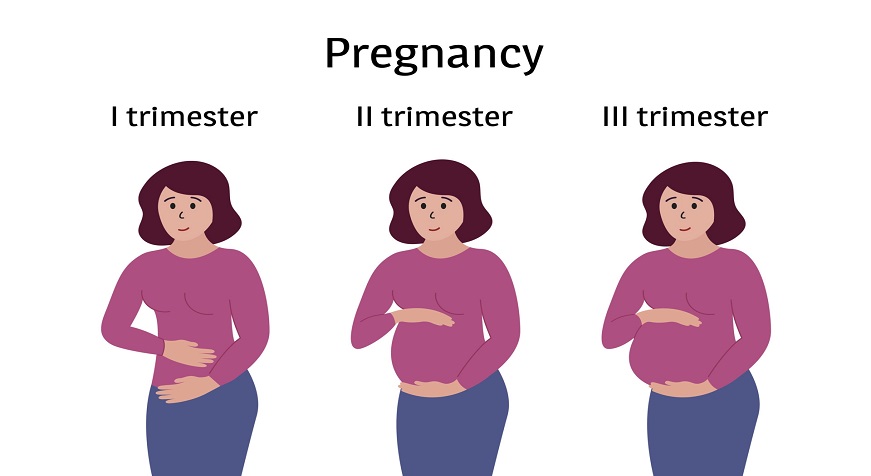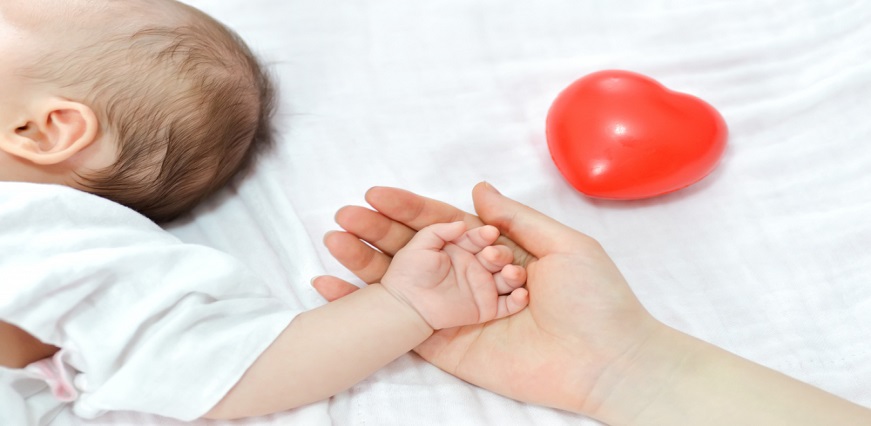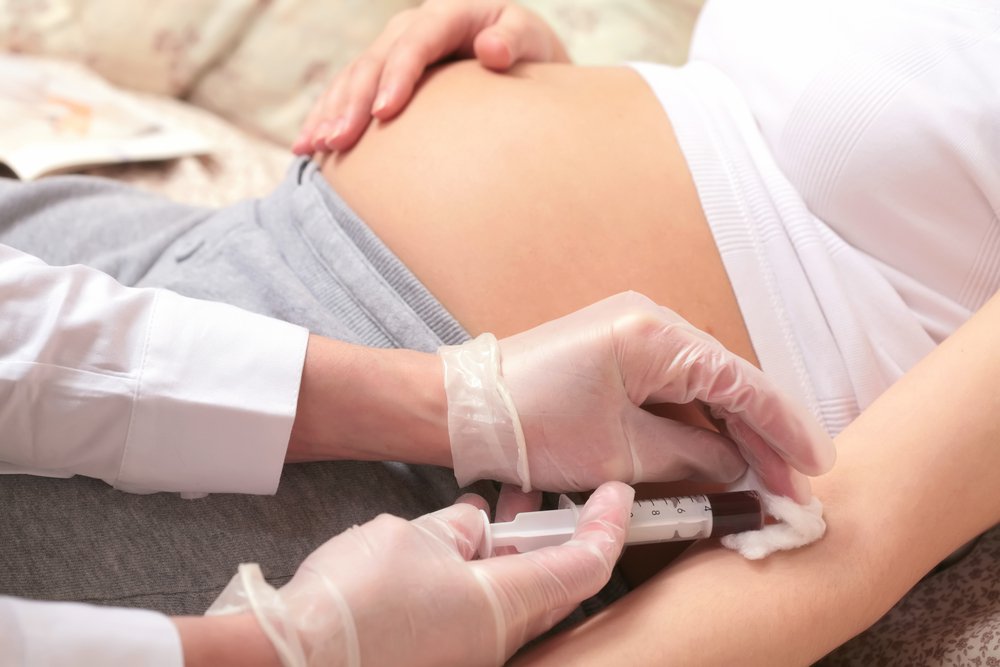Pregnancy is a time of great change for a woman’s body. Over the course of three trimesters, the body adapts and grows to accommodate a developing baby. These changes can be physical, emotional and mental, and they can be different for every woman. In this blog post, we will explore the three stages of pregnancy in more detail. We will look at the changes that take place in each stage, as well as some of the common symptoms that women experience. By understanding more about what happens during pregnancy, you can better prepare yourself for the journey ahead.
First Trimester (0 to 13 Weeks)
The first trimester of pregnancy is often the most exciting and nerve-wracking time for expecting mothers. This is when you will probably find out that you are pregnant, and begin to experience all the wonderful (and sometimes not-so-wonderful) changes that come along with pregnancy.
During the first trimester, your baby will be growing at an amazing rate. In just a few short weeks, your little one will go from being a fertilized egg to a fully formed fetus. You may not be able to feel it yet, but your baby is already moving around inside of you.
At this stage in pregnancy, you may start to feel some of the early signs and symptoms of pregnancy, such as morning sickness, fatigue, mood swings, and breast tenderness. These are all normal and should subside as your pregnancy progresses.
If you have any concerns or questions during your first trimester, don't hesitate to reach out to your healthcare provider. They can help put your mind at ease and make sure that you and your baby are healthy and doing well.
- Pregnancy Symptoms in First Trimester
During the first trimester of pregnancy, you may experience a wide range of symptoms. These can include nausea and vomiting, fatigue, breast tenderness, and mood swings. Many women also have to contend with morning sickness, which can make it difficult to get through the day.
- If you're dealing with nausea and vomiting, there are a few things you can do to help ease your symptoms. Try to Eat small meals throughout the day instead of having 3 large meals. It's also important to stay hydrated, so drink plenty of fluids. And finally, avoid trigger foods that make your symptoms worse.
- Fatigue is another common symptom during the first trimester. This is caused by the increased levels of hormones in your body. To combat fatigue, make sure you're getting enough rest and exercise. Throughout the day, taking quick naps can be beneficial.
- Breast tenderness is another common symptom, as your breasts begin to prepare for milk production. To ease discomfort, wear a supportive bra and avoid tight clothing. You may also want to take a warm shower or apply a heating pad to the area for relief.
- Mood swings are also common during pregnancy, due to the hormonal changes taking place in your body. If you're feeling down or anxious, talk to your doctor or midwife about what you're going through. They can provide support and advice on how to cope with these emotions.
- Development of your baby in the First Trimester
During the first trimester of pregnancy, your baby is growing and developing rapidly. Here's a look at some of the key milestones:
- Your baby's brain and nervous system are beginning to form.
- Your baby's heart begins to beat.
- The arms and legs of your baby start to develop.
- You may start to feel your baby move, though this is more likely in the second trimester.
- Your unborn child will be roughly the size of a grapefruit by the end of the first trimester.
- Diagnosis Test in First Trimester
There are several different tests that can be performed during the first trimester to help diagnose any potential problems with the pregnancy. The most common test is an ultrasound, which can be used to check the baby's development and look for any abnormalities. Other tests that may be performed include blood tests, urine tests, and genetic testing.
Second Trimester (14 to 26 Weeks)
The second trimester of pregnancy is often referred to as the “honeymoon period” because many of the uncomfortable symptoms experienced during the first trimester start to dissipate. This leaves expectant mothers feeling more energetic and less nauseous. However, the second trimester is not without its own challenges. Here are a few things to expect during this stage of pregnancy:
- Weight gain: Most women gain between 10 and 15 pounds during the second trimester. The extra weight is necessary to support the growing baby and placenta.
- Body aches and pains: As your belly grows, you may start to experience aches and pains in your lower back, hips, and legs. These are caused by the extra weight you are carrying and the loosening of joints in preparation for childbirth. Stretching, massaging, and wearing comfortable shoes can help alleviate some of these discomforts.
- Shortness of breath: The expanding uterus puts pressure on the diaphragm, which can make it difficult to catch your breath at times. This is completely normal and will subside after giving birth.
- Heartburn: Many pregnant women experience heartburn during the second trimester due to changes in hormone levels and increased pressure on the stomach from the growing uterus. Eating smaller meals more frequently throughout the day can help minimize this symptom.
- Fatigue: Despite having more energy than in the first trimester, fatigue is still common during pregnancy due to hormonal
- Pregnancy Symptoms in Second Trimester
In the second trimester of pregnancy, you may start to feel more energetic and less nauseated. Your belly will continue to grow, but at a slower rate. You may also have more Braxton-Hicks contractions, which are painless contractions of the uterus that can occur anytime during pregnancy.
Other symptoms in the second trimester can include:
- Heartburn or indigestion
- Swelling in your ankles, feet, and hands (called edema)
- Stuffy nose
- Shortness of breath
- Pressure low in your pelvis
- Trouble sleeping
As your baby grows and your belly expands, you may find yourself having backaches and feeling uncomfortable. To help ease some of the discomfort, try wearing supportive clothing, such as a maternity support belt, and sleeping on your side with a pillow between your legs.
- Development of your baby in the Second Trimester
As your baby grows and develops during the second trimester, it will start to look more and more like a human being. By the end of this trimester, your baby will be about half the size they will be at birth.
During the second trimester, your baby's brain and nervous system will continue to develop and mature. Their bones will also start to harden and they will start to develop little tooth buds beneath their gums. You may even be able to feel them move around a bit as they start to get stronger and more active.
By the end of the second trimester, your baby will be fully formed with all their organs in place. They just need some time to grow and mature before they are ready to enter the world.
- Diagnosis Test in Second Trimester
If you're pregnant, you may be wondering what tests and screenings you'll need during your pregnancy. Here's a rundown of the most common diagnostic tests during the second trimester of pregnancy.
- Amniocentesis: Amniocentesis is a diagnostic pregnancy test that is usually performed during the second trimester. It involves inserting a needle into the amniotic sac to withdraw a small amount of amniotic fluid. Following that, the fluid is examined for chromosomal abnormalities like Down syndrome.
- Chorionic villus sampling (CVS): CVS is a diagnostic test that is usually performed during the first or second trimester. It involves taking a sample of the placenta, which is then tested for chromosomal abnormalities, such as Down syndrome.
- Ultrasound: Ultrasound is a safe and painless diagnostic tool that uses sound waves to create an image of the developing baby. It can be used to assess the baby's size, growth, and development as well as to detect any potential problems with the pregnancy.
- Other Tests Include: Double Marker Test, Quadruple Marker Test, Triple Marker Test, Anemia Test, ANC Profile Test, CBC Test, Glucose Tolerance Test, NIPT Test, Diabetes Test
Third Trimester (27 to 40 Weeks)
The third trimester is considered as the final stage of pregnancy. It starts at 27 weeks and lasts until the baby is born, which is typically around 40 weeks.
During the third trimester, the baby grows and develops rapidly. They will gain most of their weight during this time, as well as grow in length. The lungs will also continue to develop and mature so that they are ready for breathing outside of the womb come delivery day.
moms-to-be will also notice a change in their body during the third trimester. As the baby grows, so does the abdomen. This can cause back pain and discomfort, as well as make it difficult to sleep. Shortness of breath is also common due to the extra weight being carried around. Heartburn may also become an issue because of the pressure on the stomach from the growing uterus.
Overall, though it can be tough, the third trimester is an exciting time as parents get closer and closer to meeting their little one!
- Pregnancy Symptoms in Third Trimester
As the baby grows and the pregnancy enters its final stages, some women experience increased fatigue, aching backs, and swelling in their feet and ankles. These are all common third-trimester symptoms.
- Heartburn can also become more pronounced as the baby grows and puts pressure on the stomach. Some women find it helpful to eat several small meals throughout the day instead of three large ones. Drinking plenty of fluids can also help keep heartburn at bay.
- Another common symptom in the third trimester is trouble sleeping. Many women find it difficult to get comfortable at night as their belly grows. Some may also be dealing with anxiety about the upcoming birth. Creating a relaxing bedtime routine can help ease some of this anxiety and promote better sleep.
If you're experiencing any troubling symptoms in your third trimester, be sure to reach out to your healthcare provider for guidance.
- Development of your baby in the Third Trimester
The development of your baby in Third Trimester is amazing. Your baby will continue to grow and develop, and be born healthy and happy. Here are some things to expect during the Third Trimester:
- Your baby will gain weight rapidly, and will soon be ready for birth.
- You may feel more uncomfortable as your pregnancy progresses, and may have Braxton Hicks contractions.
- It is important to stay active during this trimester, as it will help you stay healthy and prepare for labour.
- You should start to think about where you want to give birth, and what kind of support you will need during labour.
- Diagnosis Test in Third Trimester
It is important to get a diagnosis test in the third trimester to make sure that the baby is healthy and developing properly. There are several different tests that can be done, and your doctor will likely recommend one or more of them.
The most common test is an ultrasound, which uses sound waves to create a picture of the baby inside the womb. This can be used to check on the baby's growth, development, and to look for any potential problems.
Another common test is called the non-stress test. This measures the baby's heart rate in response to movement and stress. It can help to determine if the baby is getting enough oxygen and nutrients from the placenta.
Other tests that may be recommended include blood tests, genetic testing, and amniocentesis. These tests can provide more information about the health of the baby and help to rule out any potential problems.













 7982100200
7982100200























 To reach our help desk call 9213188888
To reach our help desk call 9213188888.png)
Comments